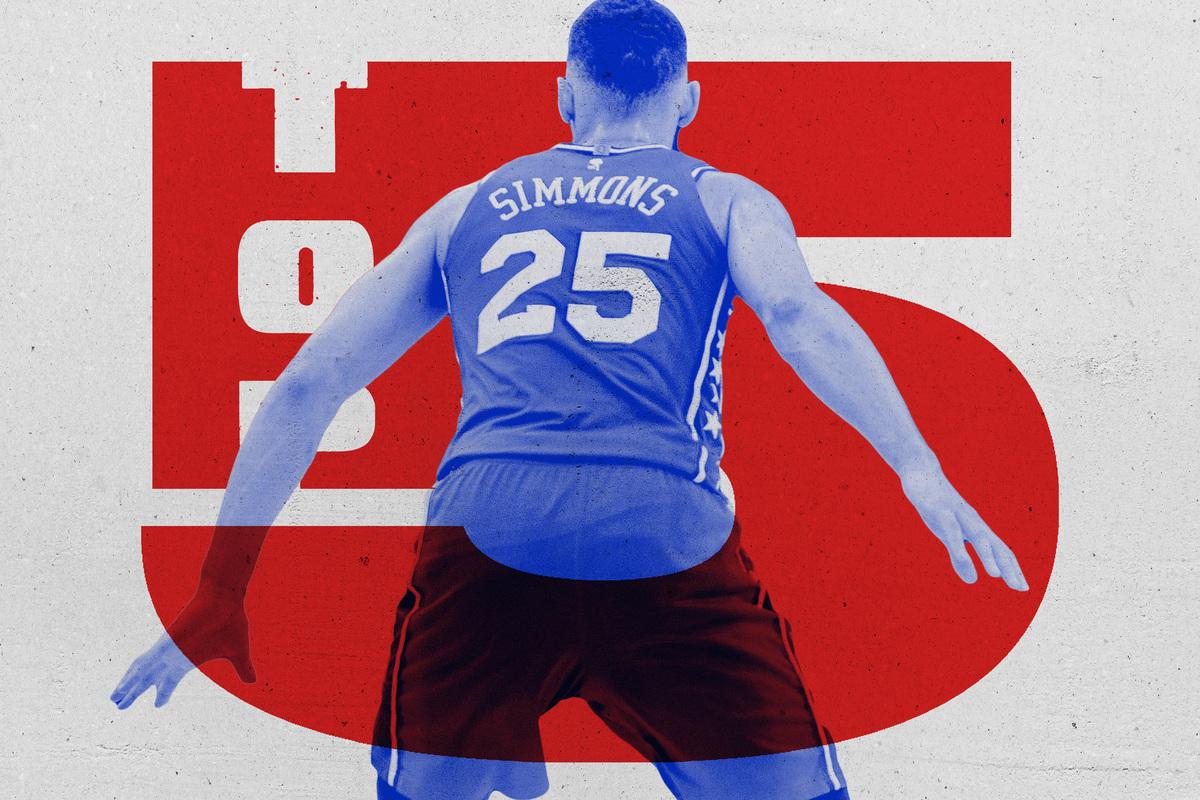
Basketball is (maybe, possibly) on the horizon. To help reintegrate us to a life of Giannis hammer dunks, James Harden dribbling for 24 seconds, and 76ers fans yelling at you for some reason, we’re rolling out top-five rankings in 20 different categories. Most of the rankings were voted on by The Ringer staff, but each day will feature one writer’s subjective skill-based list.
For this list, players were ranked exclusively by their ability to defend on the ball. Help defense, while nice, is beside the point. There is some positional bias as well; to be an effective on-ball defender, a player must be comfortable defending on the perimeter, where most modern NBA action begins.
5. Jrue Holiday, Pelicans
The three most common lineups involving Holiday this season put him at three different positions, each in an effort to accommodate the limitations of his teammates. This has become par for the course for Holiday, who has been juggling roles for long enough that it’s no longer clear what his natural position is or should be. The best answer may be all of the above; Holiday is often New Orleans’ top option at point guard, shooting guard, or small forward (assuming Brandon Ingram shifts to the 4) at a given moment, and defends accordingly. Strength is the essence of his game. It’s what allows Holiday to both play beyond his height and to enforce his will against smaller guards.
Working against Holiday is quite a restrictive exercise. If he decides to fully deny his man, just getting them the ball becomes a challenge. Once they have it, they often find that Holiday will guide their drives along on his terms—checked one bump at a time. Technique allows Holiday to limit the possible outcomes of a possession. Every action becomes more predictable. Every attempt to score becomes something that can be contained.
4. Marcus Smart, Celtics
What a magnificent heel Smart has turned out to be—in every moment an agitator, competitor, and victim simultaneously. He is strong as hell but will use an opponent’s strength against them. He will fight for position until the moment he loses it, only to then poke the ball loose. It’s rare to find a defender with a mind not only for the nuances of team defense, but also the charged dynamics of one-on-one basketball. Predicting what an opponent is going to do next takes more than a scouting report. It takes a real, human understanding of all the forces driving a player in that moment, starting with the ego that drives a player to challenge an undersized guard, whether it’s wise or not.
It doesn’t hurt, of course, that Smart has some of the best hands in the league and an impeccable sense of timing. When much larger opponents try to back Smart down, it’s never entirely clear who is the cat and who is the mouse—especially when Smart winds up stripping the ball away in the end. No other player has such a knack for turning lost-cause possessions into jump balls. Commitment alone puts Smart in a position to make more defensive plays than almost anyone else.
3. Ben Simmons, 76ers
No defender in the league is better suited to defend every aspect of the pick-and-roll. For systems that rely on channeling an opposing guard in one direction or another, Simmons can work as a massive, active roadblock. Should he need to follow his man around a ball screen, he gives his team options—Simmons is tall enough to loom over a play as he recovers from behind it, but he’s also the tallest player in the league to regularly slink through the narrowing gap between screener and ball handler. If the Sixers would rather switch out of scheme, convenience, or desperation, it will surely help to start with a 6-10 point guard.
Simmons can defend pretty much everyone, and generally does. Some of the league’s smaller guards are quick enough to get by him, and some of the burlier centers can power their way through him. For the vast majority in the middle of the NBA bell curve, however, Simmons is a powerful antidote. An on-ball defender can be only so effective. Avery Bradley doesn’t do much good standing with Patrick Beverley in the corner. Yet given the variety of players Simmons can credibly guard, his involvement—and thus his impact—is a matter within Philadelphia’s control.
2. Giannis Antetokounmpo, Bucks
When it comes to defense, stars are graded on a curve. A 20-point scorer making a respectable effort in coverage becomes a great two-way player. Anything short of falling on their face means that a star is setting an example for his team, or at least dedicating himself on both ends. The annual All-Defense teams have historically been filled with great players who defend rather than great defenders. Antetokounmpo simplifies matters by being both.
If it seems difficult to stop an agile, skilled, and explosive near-7-footer, try scoring on one. Most NBA players have no real recourse; Antetokounmpo is such an enormous imposition that he makes opponents think twice about driving against him, shooting over him, or even passing around him. Their hesitations are well founded. In the entirety of Milwaukee’s season to date, only three players have managed to score against Giannis in isolation, according to Synergy Sports. (Somehow, those three players were Smart, Julius Randle, and Shabazz Napier.) Antetokounmpo is simply too aware of his own advantage; while other players his size might show caution or discomfort in defending the perimeter, Giannis chooses to actively invade his opponent’s space, eclipsing the field of play. When facing a 7-3 wingspan, a player working from anywhere on the floor can feel as though they’ve been backed into a corner.
1. Kawhi Leonard, Clippers
Until Leonard is assigned to guard the opposing team’s best player in a playoff series, all of that team’s successes have to be qualified. A 2-0 lead in those circumstances—like the one the Bucks held over Leonard’s Raptors in the 2019 Eastern Conference finals—just isn’t as commanding as it might seem. At some point Leonard will take on the toughest assignment, and once he does, he will systematically shut down whatever had been working best. His effect is so profound that you can understand why his own team would be wary to rely on it. Even the league’s best-conditioned athletes would have trouble controlling every possession on both sides of the ball for series on end. So the Raptors waited, and the Clippers likely will, too. Then, when the situation calls for it, Leonard can—with shocking reliability—wrest control of a matchup and an entire series.
To appreciate that impact requires seeing the menace in it; teams will alter their game plans based on the implicit threat of what Kawhi may do, long before he picks up their best player. They all but have to. No other defender makes the idea of dribbling or passing in his presence feel so tenuous. In response, opposing teams develop workarounds atop workarounds, each one a concession that Leonard has reached beyond the court and into their playbook.

